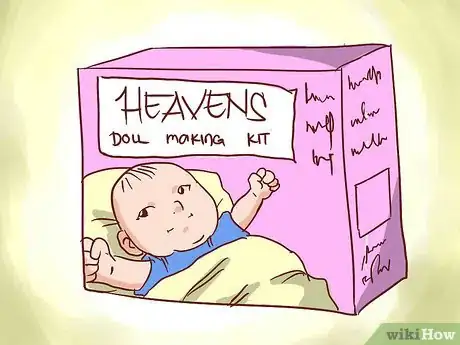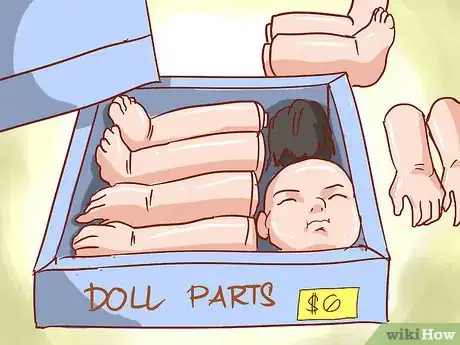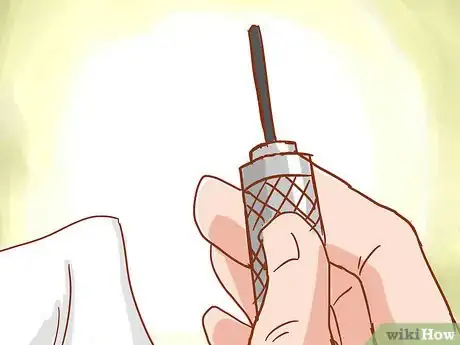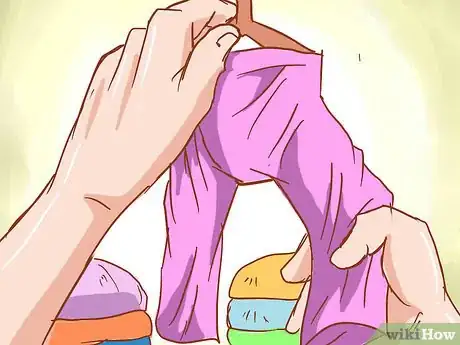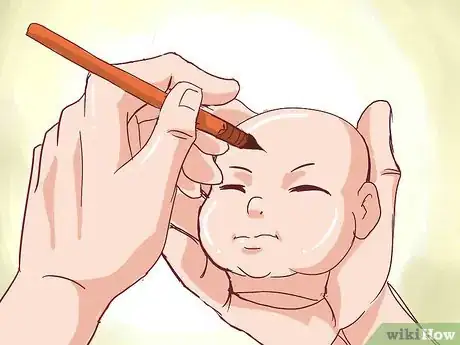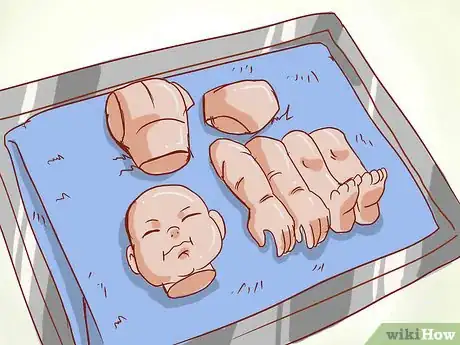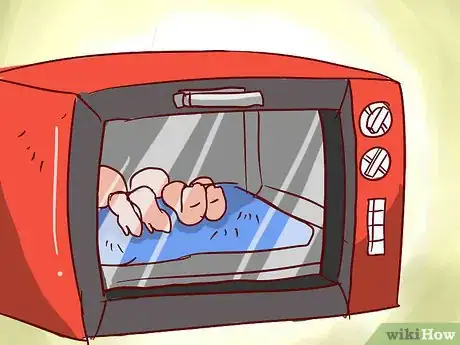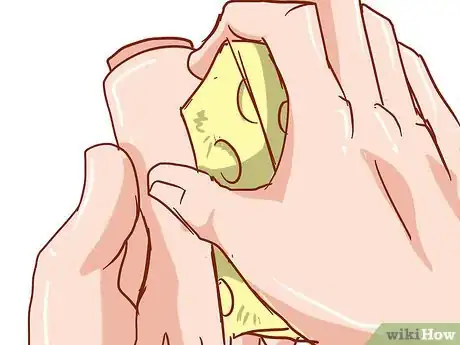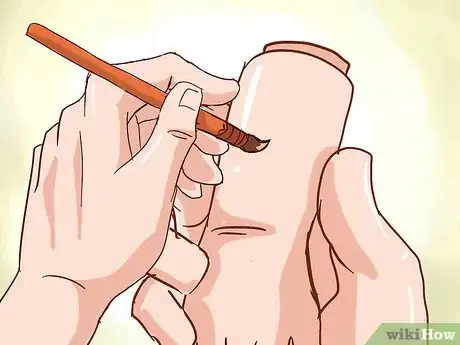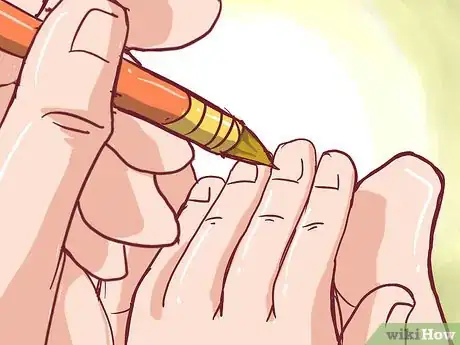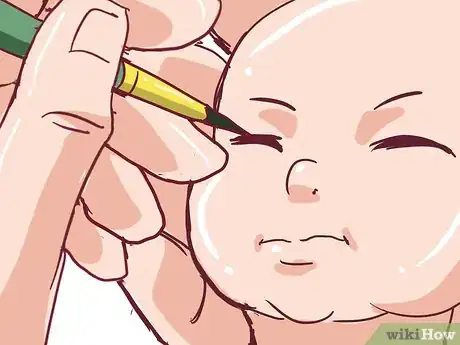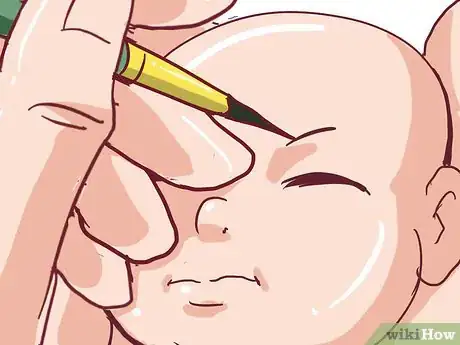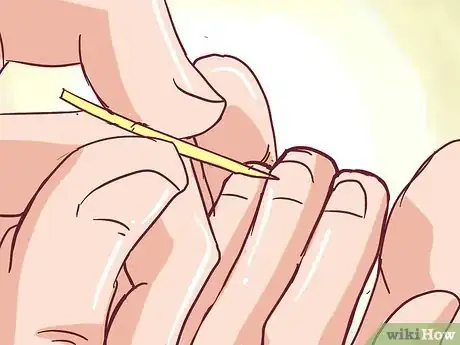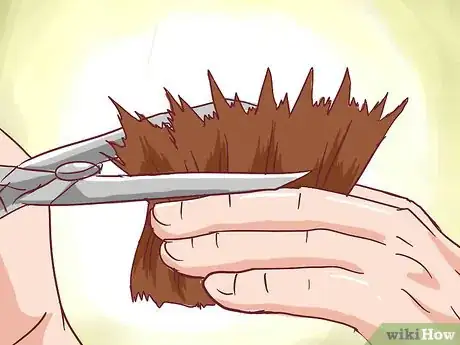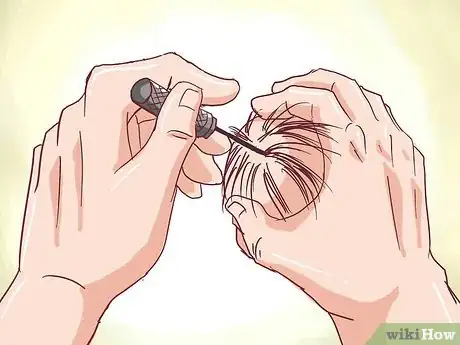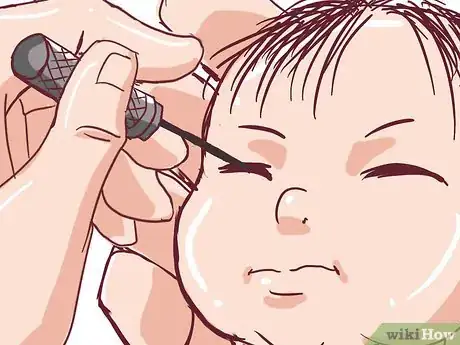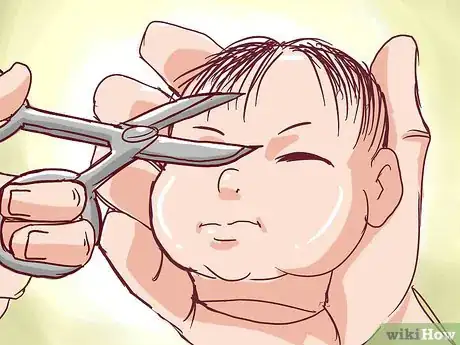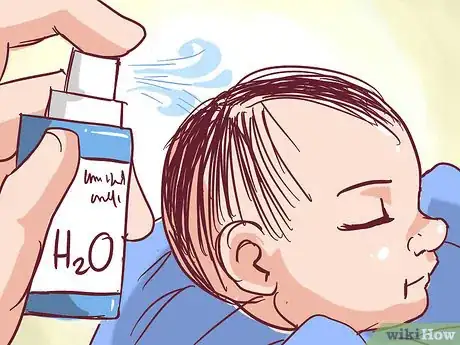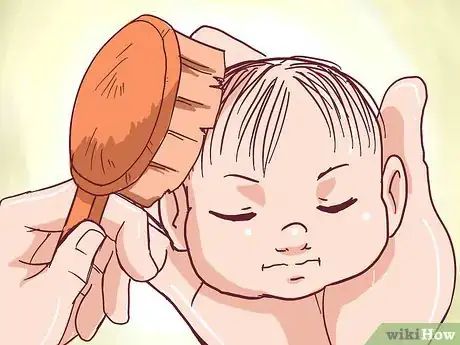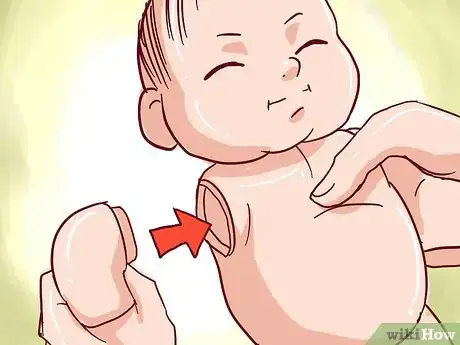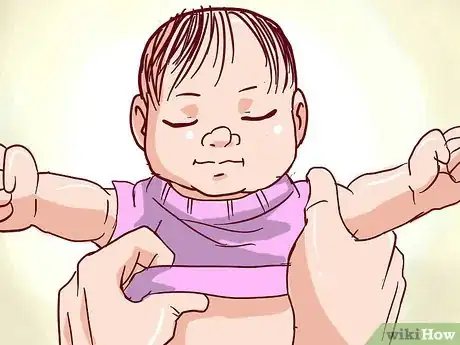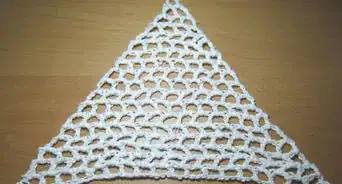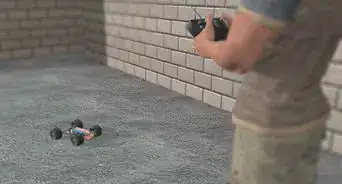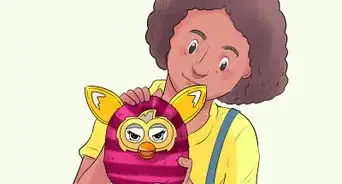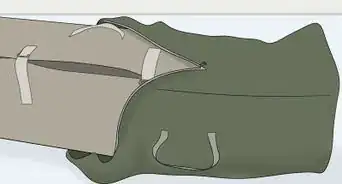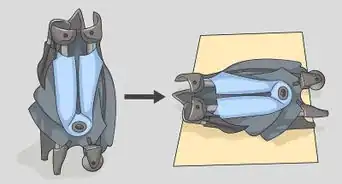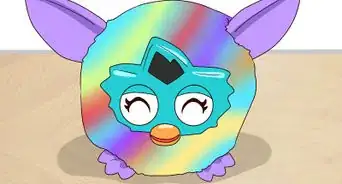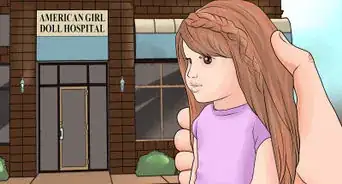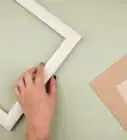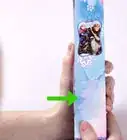X
wikiHow is a “wiki,” similar to Wikipedia, which means that many of our articles are co-written by multiple authors. To create this article, 40 people, some anonymous, worked to edit and improve it over time.
This article has been viewed 278,354 times.
Learn more...
Reborning a doll is to make a doll as lifelike as possible using paints, rooting hair, and inserted eyes, if needed. Once the process is complete, some dolls look so real they have been mistaken for real babies. The following basic (and general) steps will help lead the artist to create their very first reborn doll.
Steps
Part 1
Part 1 of 4:
Supplies
-
1Purchase a kit from a recommended reborn doll parts company. This is the easiest way to complete your first doll. Once you get a feel for the colors and doll making you can experiment with your way of doll making. The kit should contain everything you need to complete the project such as paints, stuffing materials, body, doll limbs, mohair, and the tools to complete the doll. A doll-making kit should cost around $150 and will contain almost everything needed for your first project. If you do not purchase a kit, the following suggested items will help you get started in reborning. There are purchase links listed in the sources section of this article.
-
2Purchase the doll parts to complete the project. Most dolls will need a head, arms, legs, cloth body, hair. If you are reborn an open-eyed baby, you will need to purchase eyes and perhaps eyelashes, if you choose not to buy a doll making kit.Advertisement
-
3Purchase a rooting tool.
-
4Purchase pantyhose (to fill with beads) and other fillers as required for the project.
-
5Purchase paint supplies. Most reborn artists use paints which will require the purchase of an oven, preferably a convection oven. You will need to purchase paints, paintbrushes, perhaps sea sponges or berry makers.
- Many reborn artists use air-dry paints. If you choose to use air-dry paints, make sure to follow the directions, as there may be slight variations in technique depending on the paints.
Advertisement
Part 2
Part 2 of 4:
Creating the Doll
-
1Wash all the doll parts and let dry thoroughly. Try to find a dish detergent that works well to remove oils and to clean your doll. You can search online to find out what reborn artists recommend when it comes to selecting the best dish detergent to use.
-
2Paint veins on the head and anywhere else you'd like veining. Typical areas to find veining would be on the backs of the hands and the bottom of the feet. Look at photos of babies to get a good idea of where to place the veins. Use a very thin paint, almost like watercolor, to paint the veins. Light layers of paint are what is needed to paint a reborn doll.
-
3Line a baking sheet or baking tray with a dish towel or tea towel. Place the doll parts onto the towel.
-
4Bake the doll parts that have had veins applied. The temperature is usually between 260 to 265 °F (127 to 129 °C) for 8 minutes to set the paint.
-
5Remove the doll parts and let cool.
-
6Apply a thin wash of flesh tone colored paint in a pouncing motion using a mop brush or sponge, your choice, to the doll parts. Be sure to use a very thin, almost watercolor consistency paint, otherwise, your doll will end up looking chalky. Bake according to the previous directions. Let it cool.
-
7Reapply several thin layers of flesh tone and mottling layers of colored paint using a brush or sponge. Bake to set the paint.
-
8Apply a thin wash of blushing to create a newborn blotchy look. Typical places to blush would include the bottoms of the feet (use a "U" motion to paint around the outer edges of the sole); in baby creases (do this delicately) and across the bridge of the nose and cheeks. Use a sea sponge or mop brush to pounce the paint. Bake to set paint using previous directions.
-
9Paint the nails and lips. Use a filbert paintbrush to apply the paint. Apply one layer of paint to the nails and several layers to the lips. Bake as directed above to set the paint.
-
10Paint the eyelids with fine veining using a script liner brush. Use a delicate hand, and thinned paint, to carefully paint veins on the eyelids. Use a purplish paint that looks much like Dioxide purple. Bake the doll parts as directed to set the paint.
-
11Paint the eyebrows using a script liner brush and a delicate hand. The paint should be very thin so the brows look delicate when painted onto the face. Bake the doll parts as directed to set the paint.
-
12Apply the nail tips using a liner brush or toothpick. Use a whitish paint and delicately apply a dab of paint following the curvature of the nail. Bake the doll parts as directed to set the paint.
Advertisement
Part 3
Part 3 of 4:
Rooting the Hair and Eyelashes
-
1Cut the mohair into manageable lengths, around 3 inches (7.6 cm).
-
2Insert the hair into the scalp using the rooting tool and felt needles.
-
3Glue the hair from inside the head cavity. Add a good dollop of glue to the inside of the head cavity in the scalp area. You can search online to discover what reborn artists recommend for gluing hair. Use a hemostat or other long gripping tool and a sponge to smear the glue around. Let dry.
-
4Root the eyelashes. The eyelashes are rooted the same way. Root the eyelashes in and then glue them from inside the doll head.
-
5Trim the scalp hair as desired. Look at newborn babies to get a general idea of how to style the hair. Some artists use a razor comb to style the hair as this helps create a realistic hair cut.
-
6Dampen the hair with water and place a cut off nylon, or nylon sock, on the head to hold the hair down. Let it dry.
-
7Style the hair as desired.
Advertisement
Part 4
Part 4 of 4:
Assembling the Doll
-
1Follow the kit directions or directions given for the purchased doll parts. In general, line the body cavities with cut off pantyhose and fill with beads or other filler to weight the body and head. Secure the nylons and place them in appropriate doll cavities.
-
2Assemble the doll parts following the kit or purchased body directions.
-
3Diaper your doll, if appropriate.
-
4Dress your doll in the desired outfit.
Advertisement
Community Q&A
-
QuestionWhat is the easiest way to paint my first reborn doll? Can I use water colors?
 Community AnswerNo. Do not use water colors or it won't stay on. Use silicone with it or use acrylic paint.
Community AnswerNo. Do not use water colors or it won't stay on. Use silicone with it or use acrylic paint. -
QuestionWhere is the soft spot on the baby?
 Community AnswerBabies have a soft soft on the top of their head because their skull has not formed completely and hardened yet.
Community AnswerBabies have a soft soft on the top of their head because their skull has not formed completely and hardened yet. -
QuestionCan you bake the doll parts in a regular cooking oven with a stove on the top?
 Community AnswerNo, that is not safe, and it will end up melting the doll that you worked so hard on.
Community AnswerNo, that is not safe, and it will end up melting the doll that you worked so hard on.
Advertisement
Warnings
- Always use a separate oven to bake doll parts. Most reporters now use a convection oven, one that is not used for baking food, to bake doll parts.⧼thumbs_response⧽
- Always bake the doll parts in a well-ventilated area.⧼thumbs_response⧽
- Always use paint thinners and other potentially toxic products in a well-ventilated area.⧼thumbs_response⧽
Advertisement
Things You'll Need
- Paint brushes such as mop brushes, liner brushes, brushes that work with your hands and creative ability.
- Favorite brand of paint for reborning. Some of the older styles of reborn dolls were painted with oils or acrylic paints.
- Paint palette or other palette based on the type of paint using. Some paints require a specific palette so the paints can work correctly. Check to make sure you purchase the correct palette.
- Sea sponge or berry brushes for texturing
- Cosmetic sponges
- Cotton balls
- Paper towels for keeping hands clean
- Toothpicks
- Dish towel or tea towel for baking. Plan to use an old towel as this towel should only be used for doll making.
- Micro-rooting tool
- Mohair, or other favorite hair for rooting the doll head and eyelashes
- Hemostat for gluing the hair
- Scissors or another cutting tool for cutting hair and eyelashes
- Oven thermometer
- Convection oven
- Cooling racks
- Oven mitts
References
- [1] Hunny Buns Reborn Supply source of doll making supplies.
About This Article
Advertisement
